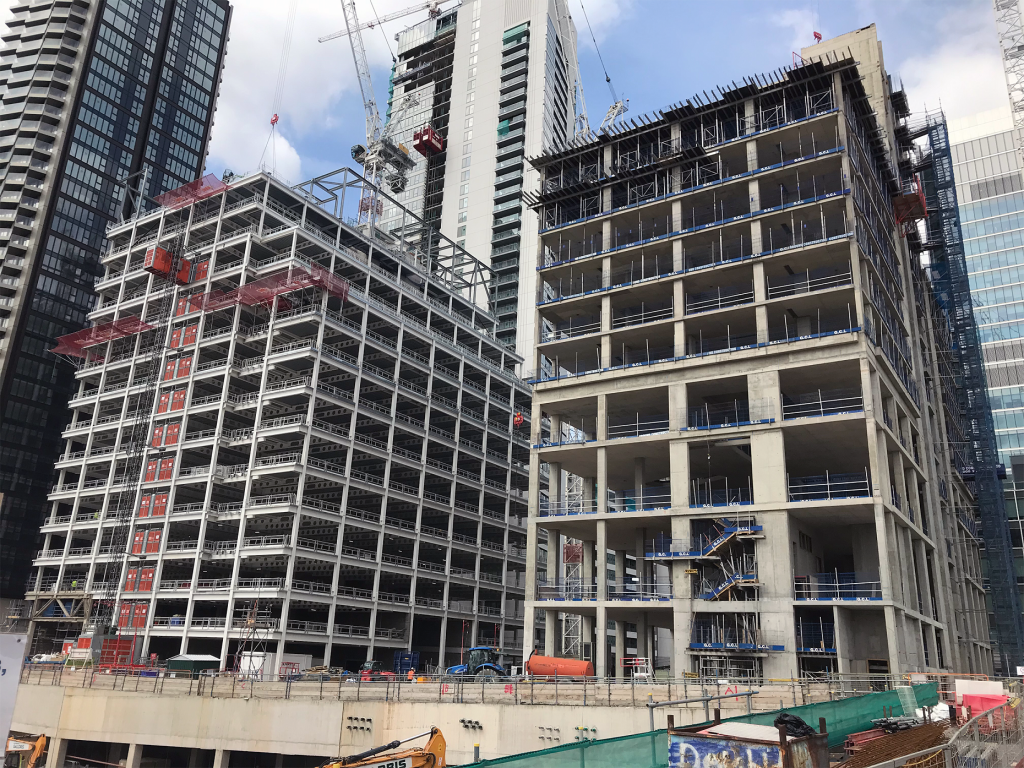Construction projects in city centres can present a number of challenges.
Primarily, locations come at a premium in urban locations – both in terms of high costs and limited space. So multi-storey buildings (usually between six and 12 storeys) or high-rise buildings (typically more than 13 storeys) are the norm.
These buildings must work hard to maximise available space. This can range from housing multiple tenants, from car parks to residential, retail or office space, to having the flexibility to be reconfigured for different uses over the building’s lifetime.
A city centre construction programme must be carefully developed and delivered to work within tight spaces; particularly as sites are close to vital infrastructure like rail links and roads as well as homes, hospitals or workplaces.
To deliver attractive and versatile city centre buildings, and meet strict logistics requirements during construction, there are some core considerations for main contractors.
First, comprehensive containment and logistics plans must be developed to reduce noise, dust and traffic disruption to neighbours. How will surrounding transport routes or the size and types of neighbouring buildings impact on the space and time available to make deliveries to site? Who are the neighbours and how might they impact on the volume of noise or dust appropriate for the development, such as schools or hospitals?
These considerations will influence decisions on the frame material. For example, larger sites will be able to accommodate storage space for certain materials while sites only granting limited foundation depths will only accommodate limited frame weights or loads.
Understanding the building’s future usage requirements will also influence the frame material choice. Where multi-purpose facilities or interchangeable layouts are required, the frame design and loadings will need to work for the future tenants in terms of spaces created and loads tolerated.
As well as considering the short-term implications of the building’s design and development, contractors must also consider the whole life cycle of the building. This will range from its carbon credentials during construction and once in use, to its flexibility for a change in use, to be a long-lasting useful feature within a city.
In many cases, working to these considerations makes steel frames the material of choice for city centre projects.
Overcoming challenges
Engaging a steelwork contractor early on in the construction process will allow for the challenges or potential problems of projects in urban areas to be identified and mitigated.
Being able to incorporate repetition and consistency into a steel frame’s design allows architects and developers to reproduce the same layout on floor after floor. With this approach reducing the demand of the building’s foundations, it is particularly useful for small city centre plots where it is essential to minimise disruption to neighbouring buildings.
For a building able to adapt to its tenants changing requirements over time, steel frames are the go-to for flexibility. A steelwork contractor can advise on how transfer structures within the steel frame will allow for optimal space usage for multi-use facilities, while long-spans created by column-free frames allow for changeable spaces.
Steel structures are also the norm for multi-storey and high-rise buildings thanks to the benefits they offer around speed and ease of assembly during erection stage. Prefabricated, ready-to-place components and columns can be quickly erected, often straight from the delivery vehicle, reducing the space required for storage of materials in already tight locations. These time-savings can add up to between 3-5% of overall project value.
Adapting for demand
But are city centre buildings still desirable?
There has been discussion in recent months over whether demand for city centre spaces will drop, as working habits and living trends have shifted since the outbreak of the pandemic. While there are now another 587 high-rise buildings being planned for London alone, the vast majority are set for residential use. And of the recent upturn in construction projects in London, up by a fifth in the first quarter of 2021, most are refurbishment works, as businesses repurpose spaces for the ‘new normal’.
To entice workers back from home-working, businesses now need their offices to offer more than just a desk space, incorporating attractive and environmentally-friendly green spaces, for example. It’s anticipated that demand will shift – rather than drop overall – for spaces which demonstrate clear sustainability practices and regard for employee wellbeing.
Developers delivering these projects within existing steel structures will be at an advantage, able to work with their steelwork contractor to repurpose spaces. Steel frame office blocks can be reconfigured to suit new trends for office layouts, more appealing to workers, and further improve a building’s credentials in achieving net zero targets.
Whether a development is brand new or a redesign and refurbishment, a steel frame will deliver benefits for both contractors, main clients and neighbours.
Visit our projects page to learn about some of the tight city centres spaces or multi-storey office blocks we’ve worked on.

